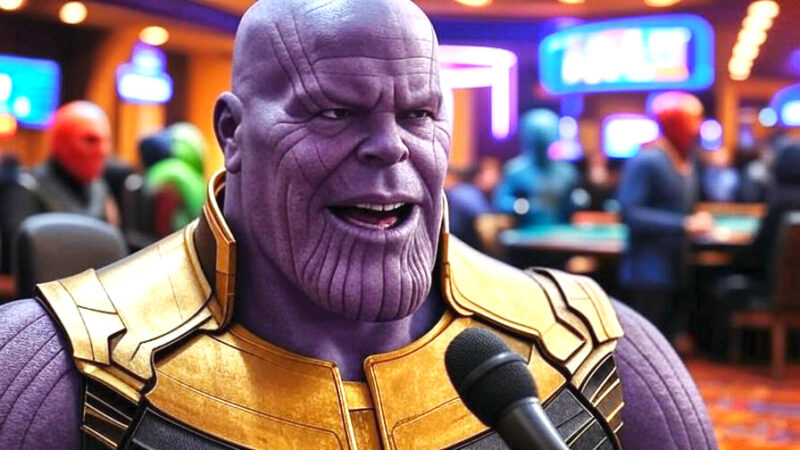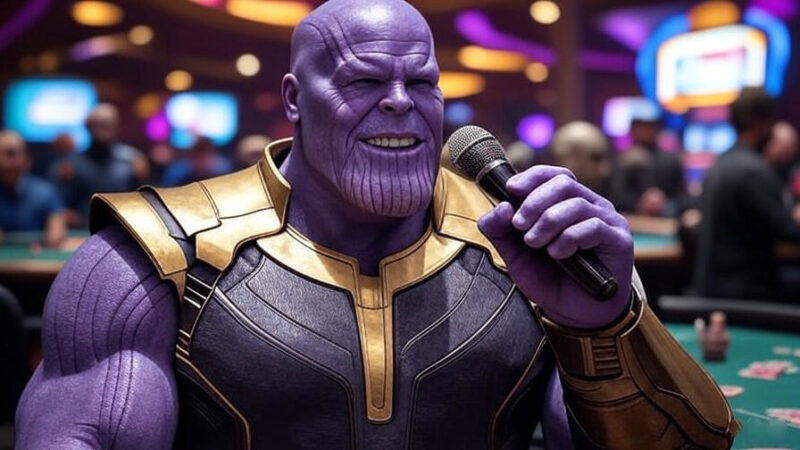When the cards are on the table and chips clatter in the pot, the real drama unfolds not just in the players’ hands, but in the voices guiding us through every bluff, raise, and reveal. Poker commentary experts transform the intricate world of strategy, psychology, and luck into a compelling narrative that keeps audiences hooked hand after hand. But what shapes their keen insights and captivating delivery? This article ventures behind the scenes to explore the minds of poker’s top commentators—their thought processes, experiences, and the unique blend of skills that turn a high-stakes game into an enthralling story. Step inside their world, where expertise meets storytelling to bring poker’s complexity to life like never before.
Understanding the Analytical Techniques Behind Expert Poker Commentary
At the core of expert poker commentary lies a sophisticated blend of real-time data interpretation and deep psychological insight. Commentators must dissect each hand instantly, weighing probabilities, player tendencies, and the shifting dynamics of the table. This analytical prowess allows them not only to narrate what’s happening but to predict what *might* happen next, offering viewers a unique window into the strategic fabric of the game.
To achieve this, experts use a series of mental heuristics and well-practiced frameworks, such as hand range analysis, pot odds calculations, and player profiling. These techniques are constantly running in the background, guiding their observations and enhancing the storytelling. Sometimes, these complex calculations are broken down with simple, relatable analogies or visual aids — turning high-level mathematics into accessible insights anyone can appreciate.
| Analytical Technique | Purpose | Example in Commentary |
|---|---|---|
| Hand Range Analysis | Estimating possible hands opponents may hold | “He’s likely holding a strong pair or a drawing hand here.” |
| Pot Odds Calculation | Assessing risk vs. reward for calls or raises | “Calling now would be profitable given the size of the pot.” |
| Player Profiling | Understanding opponent tendencies and playing style | “She’s aggressive post-flop, so expect a bluff.” |
Furthermore, top commentators continuously adapt their analysis based on a multitude of factors, including historical match data, live behavioral cues, and game flow. This dynamic methodology ensures their commentary remains relevant and insightful, keeping viewers engaged and enlightened throughout every unpredictable turn of the game.

Decoding the Psychological Insights That Shape Top Commentators’ Perspectives
Top poker commentators don’t just narrate games; they interpret the nuanced dance of human psychology unfolding at the table. Their keen understanding of behavioral cues and emotional undercurrents allows them to foresee potential moves and unravel hidden strategies. This blend of intuition and experience transforms raw gameplay into a compelling narrative, giving viewers an insider’s lens into the mindsets driving every decision.
At the core of their commentary lies a mastery of psychological principles such as cognitive bias recognition and emotional regulation. These experts skillfully dissect the push and pull between risk and reward, spotlighting moments where players’ confidence might sway their bets or where fear induces cautious plays. By doing so, they bring clarity to otherwise opaque decisions, highlighting how mental resilience often trumps mere card strength.
Several mental factors consistently influence a player’s stance at the table, as illustrated below:
| Mental Factor | Impact on Play |
|---|---|
| Risk Tolerance | Drives aggressive or conservative betting |
| Emotional Control | Prevents tilt and impulsive decisions |
| Pattern Recognition | Identifies opponents’ tells and strategies |
Understanding these psychological layers is what allows commentators to elevate their analysis beyond chips and cards, painting a dynamic mental landscape that enriches the spectator’s experience and deepens appreciation for the game’s intricate challenges.
Balancing Entertainment and Education in Poker Broadcasts
Commentary experts rely heavily on a structured delivery that segments entertainment and instruction seamlessly. Moments of high drama or unexpected bluffs are highlighted with vivid storytelling techniques, while the tactical aspects of decision-making are broken down in digestible snippets. Here is a snapshot of their typical approach:
- Contextual Storytelling: Framing each hand within player histories and tournament implications.
- Strategic Breakdown: Explaining odds, reads, and betting patterns in real-time.
- Engagement Hooks: Thought-provoking questions or speculative scenarios that invite viewer reflection.
- Humor and Personality: Lighthearted banter to humanize players and ease tension.
The fusion of entertainment with education can be summarized through the following table, which contrasts the core elements emphasized in each mode during broadcasts:
| Aspect | Entertainment Focus | Educational Focus |
|---|---|---|
| Tone | Playful and dramatic | Analytical and precise |
| Pacing | Dynamic with highs and lows | Deliberate and clear |
| Content Style | Anecdotal and reaction-driven | Conceptual and methodical |
Strategies for Aspiring Commentators to Enhance Their Delivery and Credibility
Mastering the art of poker commentary requires a blend of sharp insight and engaging storytelling. Aspiring commentators should focus on building a strong foundation of poker knowledge, studying not just the game itself but also the psychology behind players’ decisions. Cultivating this expertise allows commentators to deliver accurate, context-rich analysis that resonates with both casual viewers and hardcore enthusiasts. Listening to and dissecting the styles of established experts can provide invaluable lessons in pacing, tone, and the balance between technicality and accessibility.
To enhance delivery, it’s essential to develop a natural and confident voice. Practicing clear enunciation and varying tone helps maintain audience interest during long sessions. Utilizing real-time observation skills and reacting swiftly to unexpected plays bring authenticity to the commentary. Beyond this, engaging directly with the audience through social media or live Q&A sessions boosts credibility and fosters a loyal community, making the commentator not only a voice but a trusted source in the poker world.
| Key Skill | Action Steps | Outcome |
|---|---|---|
| Game Knowledge | Study hand ranges, player tendencies, and key strategies | In-depth, credible insights |
| Vocal Delivery | Practice enunciation and dynamic tone control | Engaging and clear communication |
| Audience Engagement | Interact via social media and live streams | Strong community trust |
The Role of Real-Time Data Analysis in Elevating Poker Commentary Quality
Top commentators harness this technology to provide a richer, more immersive experience where every chip movement tells a story. Pie charts displaying pot equity, heat maps of betting zones, and probability tables flash onscreen seamlessly, enabling them to:
- Predict potential moves based on historical data trends and current game state.
- Break down complex plays by highlighting optimal strategies and deviations.
- Engage viewers with real-time stats that clarify risk versus reward scenarios.
| Metric | Benefit to Commentary | Viewer Impact |
|---|---|---|
| Pot Odds | Instant calculation of bet value | Helps viewers grasp decision-making |
| Player Tendencies | Identifies bluff frequency and aggression | Enriches anticipation and suspense |
| Equity Graphs | Visualizes hand strength evolution | Clarifies shifting probabilities |
Q&A
Q&A: Inside the Minds of Poker’s Top Commentary Experts
Q: What does it take to become a top poker commentator?
A: Beyond a deep understanding of the game, top poker commentators combine analytical skill with storytelling flair. They must translate complex strategic decisions into engaging narratives for audiences of all levels, balancing insight with entertainment. It’s a unique blend of expertise, intuition, and communication finesse.
Q: How do poker commentators prepare for a major tournament?
A: Preparation often involves extensive study of player profiles, reviewing recent game footage, and brushing up on evolving strategies. Commentators also stay current with poker trends and meta shifts to provide relevant context. On the day, mental sharpness and adaptability are key as unexpected situations constantly arise.
Q: What challenges do commentators face during live broadcasts?
A: Live broadcasts demand quick thinking under pressure. Commentators must analyze fast-moving hands, explain intricate plays without slowing the action, and keep the audience engaged—even when the gameplay stalls. Managing technical hiccups and maintaining chemistry with co-hosts add layers of complexity.
Q: How do top commentators make poker accessible to casual viewers?
A: They break down jargon, highlight human drama, and spotlight pivotal moments to create emotional connections. By framing strategy in relatable terms and emphasizing player personalities, they invite newcomers into the game’s unfolding story.
Q: In what ways do commentators influence the broader poker community?
A: Commentators shape public perception by highlighting evolving strategies and player mindsets, effectively educating and inspiring both amateurs and pros. Their insights can popularize trends, foster sportsmanship, and contribute to the poker narrative beyond the tables.
Q: What personal qualities distinguish the best poker commentators?
A: Curiosity, empathy, and humility stand out. The best commentators continuously seek new knowledge, appreciate diverse perspectives, and acknowledge the game’s inherent unpredictability—qualities that resonate deeply with their audience.
Q: Can commentary style impact a player’s reputation?
A: Absolutely. The narrative voice can enhance or diminish a player’s image by spotlighting certain decisions or behaviors. Skilled commentators strive for balanced perspectives, though they inevitably add their own interpretation, influencing fan perception.
Q: How do poker commentary teams cultivate their chemistry?
A: Through shared passion and mutual respect, teams build rapport by blending complementary strengths—technical analysis paired with charismatic storytelling. Regular collaboration and candid feedback sessions foster fluid interactions that translate into seamless broadcasts.
Q: What do top commentators predict for the future of poker broadcasting?
A: Many envision more interactive experiences, integrating real-time data analytics, augmented reality visuals, and personalized content streams. The aim is to deepen engagement, making poker commentary increasingly immersive and tailored to diverse audiences.
Q: Why should viewers pay attention to the voices behind the mic?
A: Because commentary adds layers of meaning and excitement, transforming card play into a compelling saga. The experts’ perspectives not only decode the game’s nuances but also celebrate its human drama, enriching the overall experience for everyone at the virtual table.
Future Outlook
Peering into the minds of poker’s top commentary experts reveals a fascinating blend of razor-sharp analysis, storytelling finesse, and an uncanny ability to read not just the game, but the players behind it. Their voices transform random hands into gripping narratives, elevating each card dealt into a moment of suspense and insight. As spectators, we owe much of our appreciation for the game’s nuance and drama to these thoughtful voices, who bridge the gap between raw strategy and engaging entertainment. In understanding their craft, we glimpse the subtle art of turning poker from a mere contest of cards into a captivating human drama.



